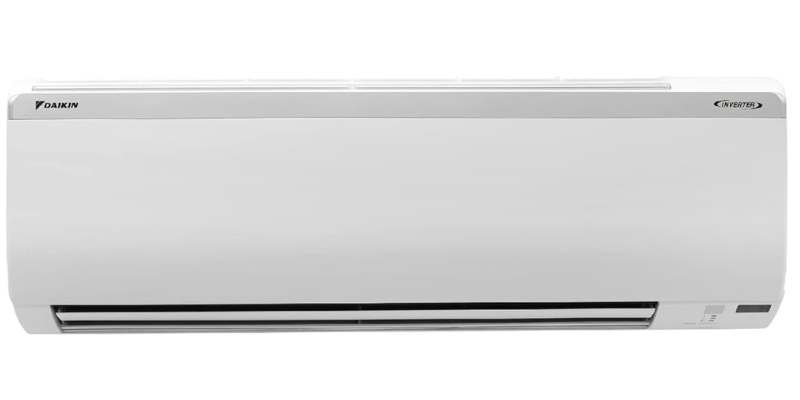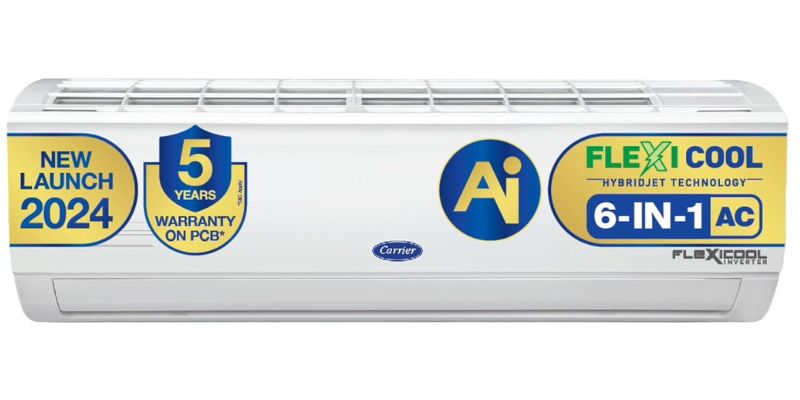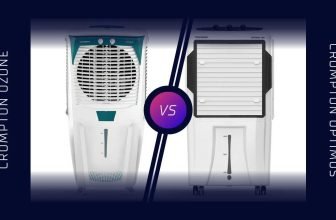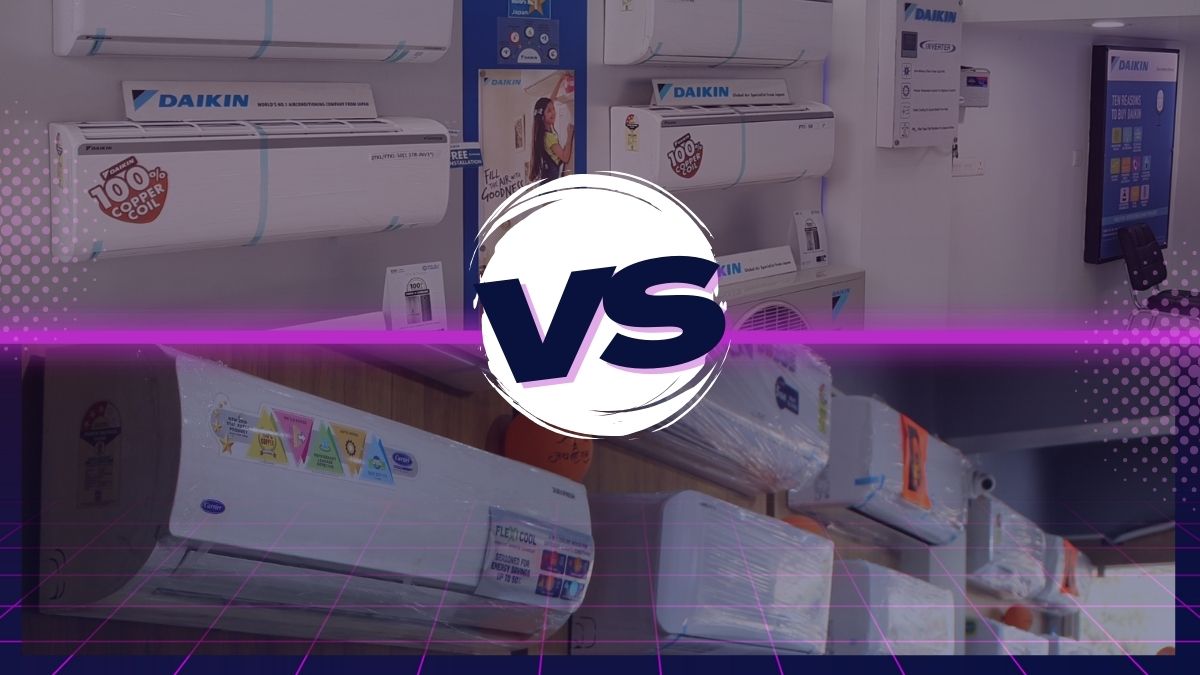
Are you not able to decide between Daikin Vs Carrier AC 1.5 ton 5 star AC, which one is better suited for a 150 Sq ft room?
I have comprehensively tested and compared the Daikin 1.5 Ton 5 Star Inverter Split AC and the Carrier 1.5 Ton 5 Star AI Flexicool Inverter Split AC on key parameters to help you decide.
Here is a comparison table of the key features of the Daikin Vs Carrier AC 1.5 Ton 5 Star.
Low Enerygy consumtion
Triple display
Low noise level
Air Purifier
Limited included accessories
Smart features
Preset memory
Low price
Air purifier
Similarities Between Daikin and Carrier 1.5 Ton 5 Star ACs
I have found that the Daikin and Carrier air conditioners have the following similarities:
- Inverter Compressor: Both use inverter compressors for energy efficiency. This allows the AC to adjust cooling capacity based on heat load.
- Capacity: Both have 1.5 ton capacity suitable for rooms up to 150 sq ft in size.
- Copper Condenser Coil: They use 100% copper coils for better cooling and lower maintenance.
- Ambient Temperature: Both can operate even when outdoor temperatures reach 52°C.

- Remote Control: Allow controlling modes, fan speeds, timers etc through the remote.
- Air Filtration: Have PM2.5 filters to trap small particles and purify indoor air.
- Self-Diagnosis: Display error codes on the indoor unit for easy troubleshooting.
Key Differences Between the Daikin and Carrier Models
However, I have also found some notable differences between the two 5 star ACs:
01. Energy Efficiency Comparison
I have found, the Daikin air conditioner has an ISEER rating of 5.2, it is little high energy efficient and good for long usage. In comparison, the Carrier model has an ISEER of 5.13.
Additionally, the annual electricity consumption of the Daikin AC is 785.67 units. The Carrier model consumes slightly more at 754.05 units annually.
Here is a comparison of the key energy efficiency parameters:
| Specification | Daikin AC | Carrier AC |
| ISEER Rating | 5.2 | 5.13 |
| Annual Electricity Consumption | 785.67 units | 754.05 units |
Over the lifespan of an air conditioner you will see, these differences of 0.07 in ISEER rating and around 30 units annually can translate into thousands of rupees in savings on your electricity bill with the Daikin model.
The higher ISEER rating of 5.2, meaningful difference in reducing power consumption especially with regular, prolonged use of the AC during summer months.
02. Stabilizer-Free Operation Comparison
Another good thing I have found, the Daikin air conditioner can operate within a voltage range of 130V-285V without requiring an external stabilizer.
Comparatively, the Carrier AC has a more limited stabilizer-free operation range of 135V-280V.
Here is a comparison of the voltage ranges:
| Specification | Daikin AC | Carrier AC |
| Stabilizer-Free Operation Range | 130V-285V | 135V-280V |
The wider input voltage range allows the Daikin AC to operate smoothly even when there are significant voltage fluctuations. This is especially useful in areas where voltage instability is an issue.
Daikin’s wider range gives it an advantage of stabilizer-free performance even when the voltage drops down to 130V or rises up to 285V.
The Carrier air conditioner would require an external voltage stabilizer to handle voltages outside of 135V-280V.
There is no winner in Stabilizer Free operation, both have similar kind
03. Cooling Comparison
Cooling power and performance is the most vital factor. In this parameter I have seen, its a close matchup between Daikin and Carrier.
The Daikin air conditioner has a high cooling capacity of 5280 Watts. It was able to effectively cool a 150 sq ft room from 40°C down to a comfortable 22°C faster.
The Carrier model has a maximum cooling capacity of 5760 Watts, slightly higher than the Daikin. However, it takes slightly longer time to cool the same size room by the same amount.
While the Carrier has a higher peak cooling capacity, the Daikin can cool the room faster. This speed of cooling is important when the room is very hot.
Both air conditioners effectively circulate air with flow rates of 593 CFM (Daikin) and 580 CFM (Carrier).
While the Carrier AC has a slight edge in maximum capacity, the Daikin cools faster and is a winner when you need quick cooling. It’s a very close match between the two models in terms of cooling performance.
04. Noise Level Comparison
The noise level of the Daikin unit ranges from 32 dB on low fan speed to 44 dB on high fan speed. Comparatively, the Carrier has higher noise levels ranging from 38 dB to 44 dB.
Here is a breakdown of the noise levels at different fan speeds:
| Fan Speed | Daikin Noise Level | Carrier Noise Level |
| Low | 32 dB | 38 dB |
| Medium | 38 dB | 42 dB |
| High | 44 dB | 44 dB |
As you can see, there is a significant 6 dB difference in the low speed and 4 dB difference in medium speed noise levels. The Daikin runs much more quietly, especially useful for nighttime operation.
Lower noise levels also contribute to a more peaceful and less intrusive ambient environment. The Daikin air conditioner’s quiet performance, it is good for bedrooms or living rooms where noise is a concern.
05. Smart Features Comparison
The Carrier AC is ahead when it comes to connectivity and added features. It has a Hydro Blue coating for corrosion resistance and a refrigerant leakage detector for safety.
However, the Daikin model has some unique smart features of its own. It has a triple LED display that shows real-time power consumption, temperature setting and error codes. This allows the user to monitor performance. Daikin also has Power Chill mode for faster initial cooling and stabilizer inside technology to handle voltage fluctuations better.
The Carrier AC edges out with more connectivity and safety features. But the Daikin also offers useful smart capabilities like the LED display and Power Chill mode.
06. Maintenance Comparison
When comparing the Daikin and Carrier models, both are quite reliable but some differences exist.
On maintenance, the Carrier AC edges out the Daikin model due to some added features.
Both Daikin and Carrier use 100% copper condenser coils that require less maintenance than aluminum coils. The PM2.5 filters need cleaning every 2-4 weeks depending on usage for both models.
I have found, the Carrier AC offers Hydro Blue coating on its condenser fins. This protects the fins from corrosion, salt damage and weather-induced deterioration. This contributes to longer lasting cooling performance.
The Carrier also has an automatic cleanser feature using its ionizer to keep the evaporator coil free from dust and odor. This reduces manual cleaning requirements.
While both are reliable models, the Carrier’s hydrophilic blue coating and automatic cleanser give it an edge in terms of lower maintenance. This results in better long-term durability.
So for buyers looking for an air conditioner with reduced maintenance requirements, the Carrier 1.5 ton AC is the winner in this category.
Which is Better for 150 sq ft Room Size?
For a medium room of 150 sq ft, both the Daikin and Carrier 1.5 ton ACs are suitable. I have seen, the Daikin AC is better optimized for faster and quieter cooling in a 150 sq ft bedroom or living room.
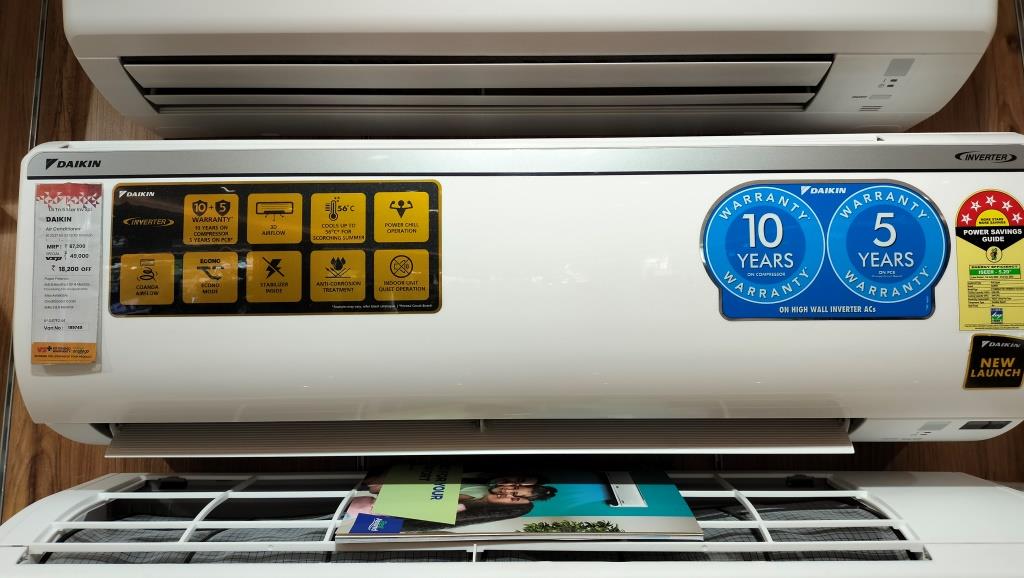
The Daikin AC has a cooling capacity of 5280 Watts, plenty powerful for effective cooling in a 150 sq ft room. It can lower temperatures from 40°C to a comfortable 22°C under 15 minutes with its Power Chill mode. The air flow rate of 593 CFM ensures efficient air circulation as well.
Operation is very quiet with noise levels ranging from 32 dB to 44 dB, which is important for bedrooms.
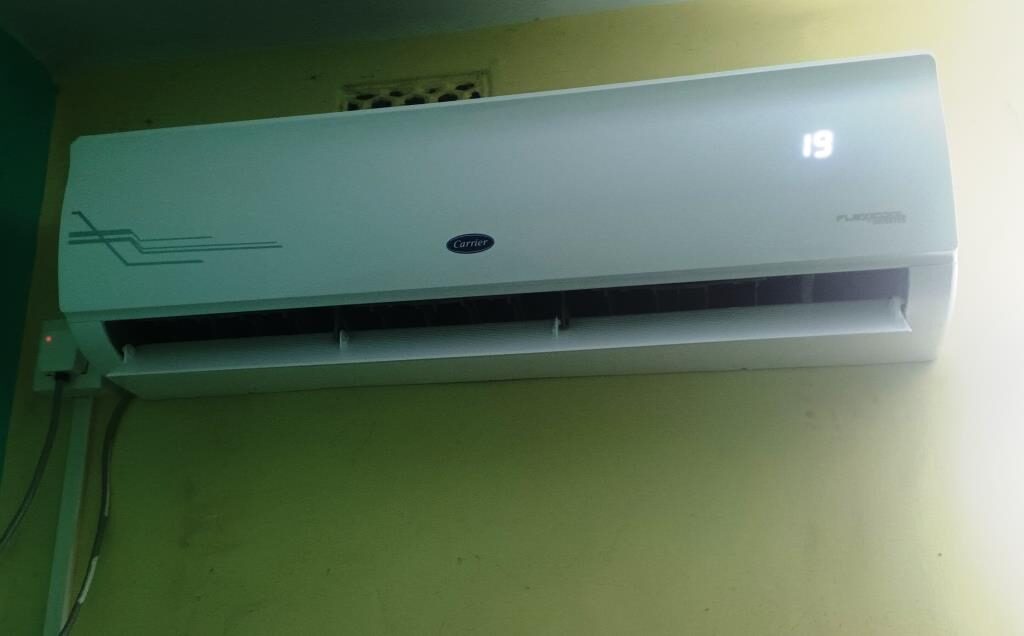
The Carrier AC takes 1 minute longer to cool the room. Noise levels range from 38 dB to 44 dB, so it’s not as quiet. The Carrier does have greater mode flexibility and added features.
But for a medium room where fast, powerful, and quiet cooling is the priority, the Daikin air conditioner is the better choice.
Which is better – Daikin Or Carrier AC?
If you are trying to decide between Daikin Vs Carrier AC 1.5 Ton 5 Star.
4 Reasons to Consider Buying Daikin 1.5 Ton 5 Star AC
here are 4 reasons to consider Daikin:
- Higher energy efficiency
- Lower noise
- Faster cooling
- Triple LED display
4 Reasons to Consider Buying Carrier 1.5 Ton 5 Star AC
Here are reasons one may prefer the Carrier AC:
- 6-in-1 cooling modes
- Improved corrosion resistance for coils.
- Energy efficient
- Leakage detector
Read more comparisons:
Daikin Vs Panasonic AC 1.5 Ton 5 Star
Carrier Vs Blue Star AC 1.5 Ton 5 Star Rating
Daikin Vs Voltas 1.5 Ton Split AC
LG Vs Daikin AC 1.5 Ton 5 Star Rating
Verdict – Depend on user preferences
Based on the parameters compared, the Daikin air conditioner edges out the Carrier model.
The Daikin AC wins when it comes to faster, more powerful cooling. It also operates more quietly, with noise levels 2-4 dB lower than the Carrier model.
Energy efficiency is another advantage, with Daikin having an ISEER of 5.2 compared to 5.13 for Carrier. It consumes less power annually. Daikin also has wider stabilizer-free operation.
The Carrier does edge out when it comes to smart features and lower maintenance requirements. But for most homes where powerful cooling, noise and efficiency matter more, the Daikin air conditioner is the winner.
Of course, both are great options with minor differences. Ultimately it depends on your specific needs and budget. But overall, the Daikin AC gets the slight edge for its faster cooling, quieter operation and energy efficiency.

